Keeping a dependable and systematized environment in a data center is basic to achieve optimal functioning, and correct data center cable management is a “must”. In a report by Information Technology Intelligence Consulting, 57% of companies with 20 to 100 employees reported that an hour of data center downtime cost them up to $100,000 an hour.
In this occasion, we’ll analyze the basics of data center wire management, from picking the right cable manager for network rack systems to implementing the best proven practices in a cable management server room.
Why Does Data Center Cable Management Matter?
Data center cable management refers to the systematic organization, labeling, and documenting of cables. Effective cable management in data centers not only helps reduce cable spaghetti and improve troubleshooting but also enhances capacity utilization.
Boosting Efficiency and Reducing Interruption
Data centers house the structure that runs business operations, stores massive volumes of data, and allows the running of cloud services. Each rack and cabinet has a high density of cables, which makes it difficult to get access to other critical network components. With skillfully organized cable management, server room technicians can speedily spot and solve any issues. Cable management effectively improves troubleshooting and reduces downtime.
Enhancing Airflow and Cooling
Correct data center cable management aids in the optimization of airflow by reducing the clutter that may block cool air or divert it away from the servers. Good airflow means fewer hot spots, less tension on your cooling equipment, and, potentially, lower energy costs.
Improving Safety and Compliance
Cable sprawl can cause tripping hazards, making the data center unsafe for technicians and workers. Moreover, TIA-942 or ISO/IEC 11801 data center standards highlight thoughtfully designed wiring as a key feature in complying with the ruling safety and operational guidelines.
Tools and Materials You Should Have for Data Center Wire Management
Before directly stepping into data center wire management, gather all the equipment you will need for a successful, professional setup:
- Cable Manager for Network Racks: Horizontal or vertical cable organizers secure and route cables neatly.
- Cable Trays and Ladder Racks: Overhead or under-floor pathways that support and route bulk cable bundles.
- Velcro Straps or Hook-and-Loop Ties: These prevent over-tightening, which can damage cables and lower signal quality.
- Labeling Tools: Put labels or color-coded tags on your cables to find their origins and destinations.
- Cable Tie Mounts and Cable Clamps: Use them for securing cable bundles along walls or within racks without crushing cables.
- Documentation Software or Templates: Have a clear record of cable types, lengths, and endpoints.
-
Patch Panels: They are the best solution to secure Ethernet cables and keep them organized in data centers or server rooms.
4 Top Practices for Cable Management
1. Standardized Cable Lengths
One of the most frequent problems in cable management server room settings is when there’s inconsistency in the use of cable lengths. Standardizing cable lengths, when possible, maintains homogeneity and diminishes slack.
2. Label Everything
Labeling cables on both ends prevents confusion during troubleshooting or eventual upgrades. A typical labeling convention includes:
- Rack number or name
- Patch panel and port information
- Server or switch port details
3. Separate Power and Data Cables
Running data and power cables close together can cause interference. This interference may result in decreased signal quality or performance. To avoid this, use separate cable trays for data and power. Note that if they must cross, you should direct them perpendicularly.
4. Bundle Your Cables Properly
Instead of plastic ties, which can be overtightened, use Velcro straps or hook-and-loop ties for bundling cables. This will help you prevent pinching and will make it easier for you to adjust if you need to reconfigure or add new cables.
Step-by-Step Cable Management Implementation
The structured approach described below mirrors a professional installation process:
Plan and Asses
- Map out the location of each server, switch, and patch panel.
- Craft a visual design of the installation considering cabinet locations and cable pathways to detect possible issues before doing the installation.
- Determine the number of cables you need and their corresponding lengths.
Install Cable Management Hardware
- Mount vertical or horizontal cable manager for network rack solutions on each rack.
- Fix ladder racks or cable trays along predefined routes.
Pre-Label Your Cables
- Assign IDs for both ends of each cable before going on with the installation.
- Use different color-coded cables for the different functions (e.g., red for power, blue for data, or yellow for management networks).
Route and Separate Cables
- Group your cables by their function, such as network, power, and management.
- Try to keep cables going in the same direction to avoid tangles.
- Use zip ties loosely or Velcro straps to keep bundles organized.
Document Your Work
- Keep your data center layout diagram and cable inventory up to date.
- Register new cable IDs, routes, and endpoints in your documentation.
- Store this information in an easily reachable and safe location for future reference.
Test and Verify
- Check your network connectivity and ensure each device is linked to the correct port.
- Corroborate the integrity of the signal for all cables using a cable tester.
- Inspect the physical layout and airflow paths for any obstructions.
Expert Tip: Create a maintenance schedule, let’s say quarterly or twice a year, to check cables, replace worn straps, and add to your documentation any hardware changes you make.
Mistakes You Should Avoid
- Overstuffing Cable Trays: Overcrowded trays can result in tangled cables and likely signal degradation.
- Not Preparing for the Future: Estimate what your future demands could be and install trays a little larger than your present needs.
- Choosing the Wrong Cable Tray: Cable trays support insulated cables. There are different types of cable trays, and you need to know the cable type and the environment where you’ll install it to determine the tray you need.
- Neglecting Documentation: Unlabeled cables are a formula for chaos. Appropriate documentation saves you time and decreases the risk of accidental disconnections.
- Mixing Cable Types: Mixing copper and fiber without proper separation can cause mechanical stress or contamination in fiber cables. Keep them separated and labeled.
- Inconsistent Rack Layout: Place the same types of hardware in uniform positions across racks. Inconsistency complicates cable routing and delays troubleshooting.
- Skipping Regular Testing: Conduct routine, scheduled cable testing and visually inspect connections. This helps you detect early signs of cable wear or faulty terminations.
Conclusion
Data center cable management isn’t about aesthetics—it nurtures a safer workspace, improves system reliability, and streamlines troubleshooting. By following the structured guidelines we shared, such as labeling cables, planning pathways, and routinely auditing the infrastructure, you can significantly diminish downtime and prolong the life of your servers and overall networking equipment.
For more information on this topic, you can keep up on our blogs. While VCELINK offers general and basic information for our customers and other visitors to the website, it’s not professional advice.

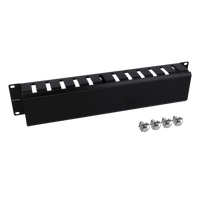
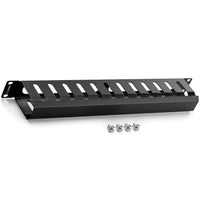
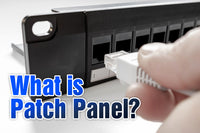
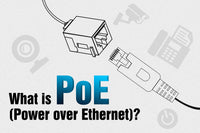
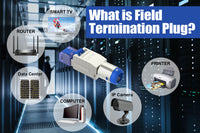
Be the first one to comment.
Leave a comment